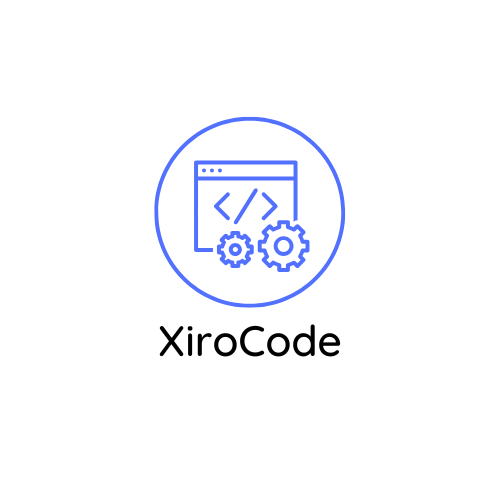In a world where apps are the new superheroes, web application development in the USA stands out like a cape-wearing tech wizard. Businesses are no longer just looking for websites; they crave dynamic, user-friendly applications that can turn casual visitors into loyal customers faster than you can say “download now.” With the right web app, a company can streamline operations and deliver a user experience that keeps people coming back for more.
Web Application Development In USA
Web application development has gained significant traction in the USA. Businesses increasingly prioritize these applications for their ability to engage customers effectively. Dynamic functionalities distinguish web applications from traditional websites, enhancing user experience and promoting customer loyalty.
User-friendly interfaces play a critical role in attracting and retaining users. Many companies opt for customized solutions that meet specific needs, enabling them to stand out in competitive markets. Developers in the USA often utilize cutting-edge technologies such as React, Angular, and Vue.js to create responsive applications.
The focus on security remains paramount in this development landscape. Secure authentication methods, data encryption, and regular security audits ensure user data protection. Compliance with regulations like GDPR and CCPA also influences development strategies, as companies seek to build trust with their users.
Scalability is another vital consideration. The increasing demand for applications that can grow with organizational needs drives developers to design flexible architectures. Cloud-based solutions often offer seamless scalability and cost efficiency, further supporting businesses in their growth.
Project management methodologies, such as Agile and DevOps, enhance collaboration and productivity. Frequent iterations and feedback loops allow teams to adapt quickly and improve applications based on user insights. These methodologies ensure that web applications remain aligned with business goals.
Outsourcing certain development aspects to skilled professionals is a common practice among USA businesses. This approach allows firms to access specialized expertise and reduce development timelines. Overall, the landscape of web application development in the USA continues to evolve, emphasizing innovation and user-centric design.
Key Technologies Used

Web application development in the USA relies on several key technologies to deliver effective and efficient solutions. These technologies cater to both the frontend and backend needs of businesses, ensuring a seamless user experience.
Frontend Technologies
Frontend technologies play a crucial role in creating user interfaces that engage and retain visitors. React, Angular, and Vue.js are popular frameworks chosen by developers for their ability to build dynamic and responsive web applications. Each framework offers unique advantages; for instance, React excels in performance and modularity, while Angular provides a comprehensive solution with a robust architecture. Additionally, CSS frameworks like Bootstrap enhance design consistency and responsiveness across devices, ensuring applications work well on various screen sizes.
Backend Technologies
Backend technologies focus on server-side functionality that supports web applications. Node.js stands out for its ability to handle multiple connections efficiently, making it ideal for real-time applications. PHP remains a widely used language, thanks to its simplicity and strong community support. Furthermore, Python has gained traction due to its versatility and ease of integration with various frameworks. Databases such as MySQL and MongoDB provide essential data storage solutions, allowing applications to manage and retrieve information effectively while ensuring scalability and performance.
Development Process

The development process for web applications in the USA is crucial for ensuring quality and efficiency. Each stage plays a significant role in delivering an effective product.
Planning And Design
Successful web application development starts with thorough planning and design. Gathering requirements from stakeholders is essential to understand user needs. Creating wireframes helps visualize the application structure, while UX design focuses on enhancing user experience. Defining the technology stack early on aids in aligning with project goals. Collaboration among developers, designers, and project managers ensures everyone is on the same page, streamlining the workflow and reducing errors.
Implementation
Implementation involves translating design into functioning software. Developers use frontend frameworks like React or Angular to create engaging user interfaces while backend technologies like Node.js or PHP power the server-side operations. Agile methodologies enhance productivity by breaking tasks into manageable sprints. Continuous communication within the team promotes adaptability, allowing for adjustments based on user feedback and changing requirements.
Testing And Deployment
Testing and deployment ensure the application functions as intended before going live. Comprehensive testing includes unit tests, integration tests, and user acceptance tests to identify and rectify issues early. Automated testing tools can expedite this process. Following successful testing, deployment involves launching the application in a production environment. Monitoring post-deployment performance is critical for addressing any potential issues swiftly and optimizing user experience based on real-world usage.
Trends Shaping The Industry

Web application development in the USA is influenced by several key trends that enhance functionality and user experience. These trends reflect the industry’s adaptive nature and commitment to leveraging advanced technologies.
Cloud Computing
Cloud computing continues to transform web application development. Businesses embrace cloud solutions for their scalability, cost efficiency, and accessibility. By utilizing platforms such as AWS, Google Cloud, and Microsoft Azure, developers can deploy applications quickly and manage resources effectively. Increased reliance on cloud environments allows for smoother updates and maintenance, which ultimately improves user satisfaction. Enhanced collaboration among teams is possible due to shared cloud resources, streamlining communication and project management.
AI And Machine Learning
AI and machine learning are becoming integral to web application development. Developers implement these technologies to analyze user behavior and personalize interactions, driving engagement and retention. Automated support systems powered by AI offer immediate assistance to users, significantly improving response times. Machine learning algorithms enhance data analysis, allowing businesses to extract valuable insights to refine services. As AI capabilities continue expanding, web applications evolve into more intelligent, efficient platforms, aligning with user expectations for exceptional experiences.
Challenges Faced By Developers
Web application developers face various challenges in their work. Security concerns rank at the top of their list. Developers must implement secure authentication methods and data encryption to protect user information. Compliance with regulations like GDPR and CCPA is critical, ensuring that applications respect user privacy. Regular security audits and vulnerability assessments help address potential risks proactively.
Keeping up with technology represents another significant challenge. Rapid advancements in technologies, frameworks, and practices complicate development processes. Developers find themselves constantly learning new tools, languages, and methodologies. Furthermore, adapting to new trends like AI and machine learning requires ongoing education and flexibility. Competitors often utilize the latest innovations, making it essential for developers to stay informed to maintain relevance in the industry.
Conclusion
The landscape of web application development in the USA is rapidly evolving. Businesses are embracing innovative technologies to create user-friendly applications that drive engagement and efficiency. By prioritizing security and scalability, companies can ensure their applications not only meet current demands but also adapt to future growth.
As trends like cloud computing and AI continue to shape the industry, staying ahead requires a commitment to continuous learning and adaptation. The focus on customized solutions and agile methodologies highlights the importance of collaboration and flexibility in today’s competitive market. Ultimately, the future of web application development promises exciting opportunities for those willing to innovate and embrace change.

